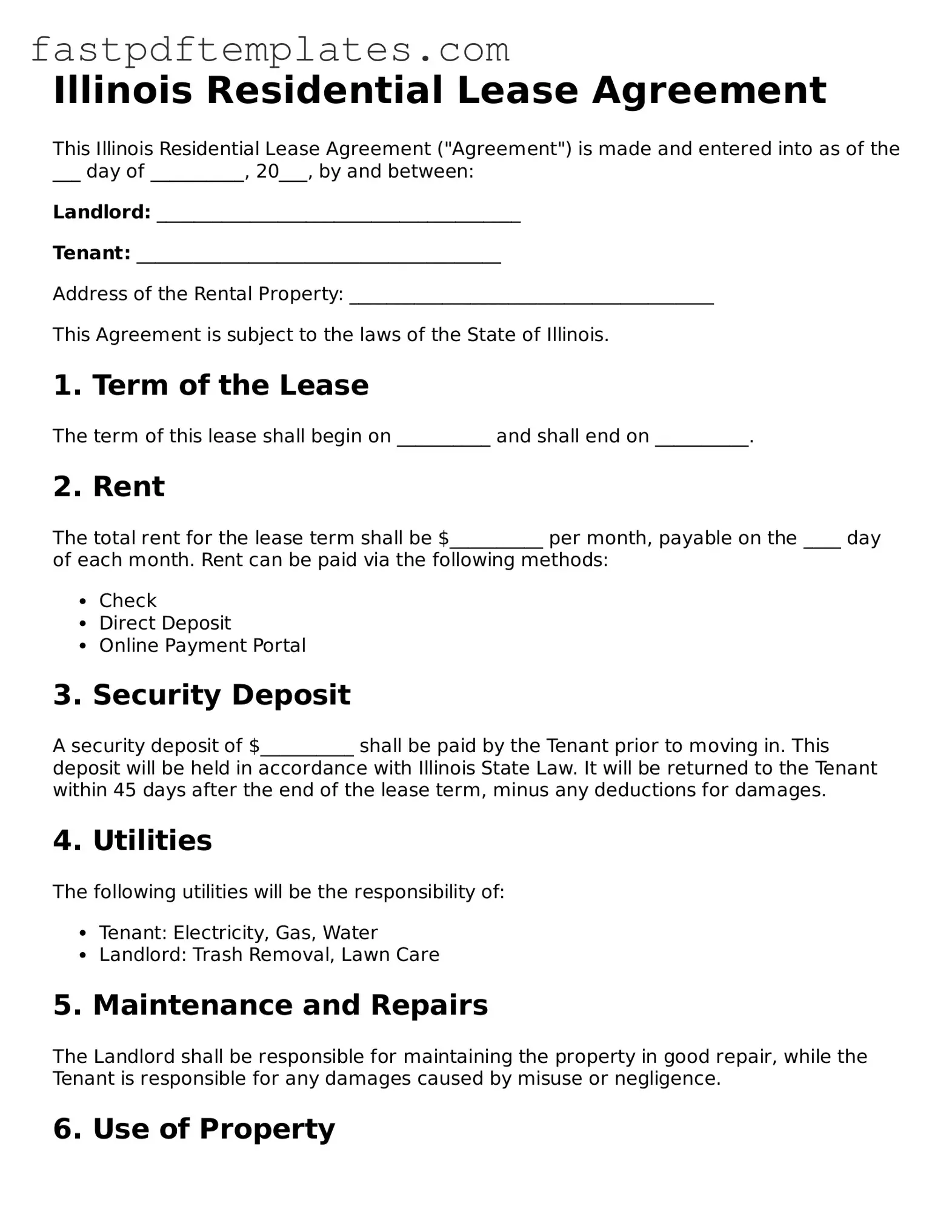Illinois Residential Lease Agreement
This Illinois Residential Lease Agreement ("Agreement") is made and entered into as of the ___ day of __________, 20___, by and between:
Landlord: _______________________________________
Tenant: _______________________________________
Address of the Rental Property: _______________________________________
This Agreement is subject to the laws of the State of Illinois.
1. Term of the Lease
The term of this lease shall begin on __________ and shall end on __________.
2. Rent
The total rent for the lease term shall be $__________ per month, payable on the ____ day of each month. Rent can be paid via the following methods:
- Check
- Direct Deposit
- Online Payment Portal
3. Security Deposit
A security deposit of $__________ shall be paid by the Tenant prior to moving in. This deposit will be held in accordance with Illinois State Law. It will be returned to the Tenant within 45 days after the end of the lease term, minus any deductions for damages.
4. Utilities
The following utilities will be the responsibility of:
- Tenant: Electricity, Gas, Water
- Landlord: Trash Removal, Lawn Care
5. Maintenance and Repairs
The Landlord shall be responsible for maintaining the property in good repair, while the Tenant is responsible for any damages caused by misuse or negligence.
6. Use of Property
The property shall be used strictly for residential purposes. The Tenant agrees not to conduct any illegal activities on the premises.
7. Pets
Pets are:
If pets are allowed, an additional pet deposit of $__________ will be required.
8. Termination
Either party may terminate this Agreement by providing written notice at least 30 days before the desired termination date. The Tenant must ensure the premises are returned in clean and undamaged condition.
9. Governing Law
This Agreement shall be governed by and construed in accordance with the laws of the State of Illinois.
IN WITNESS WHEREOF, the parties hereto have executed this Lease Agreement as of the day and year first above written.
Landlord Signature: ____________________________
Date: ____________
Tenant Signature: ______________________________
Date: ____________
